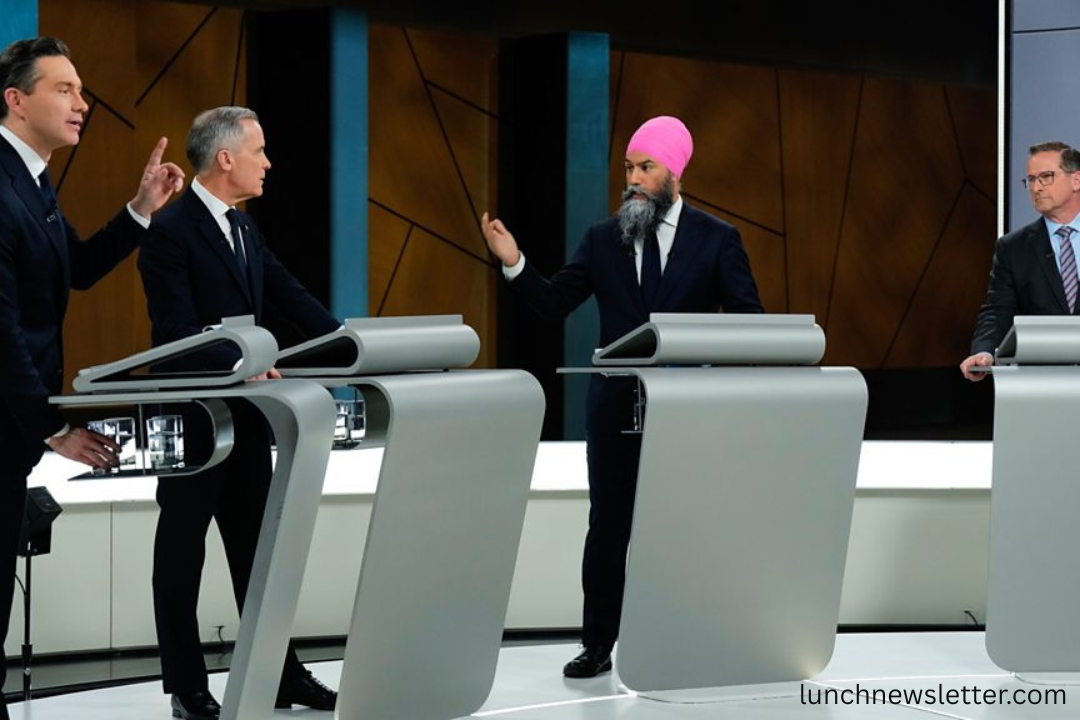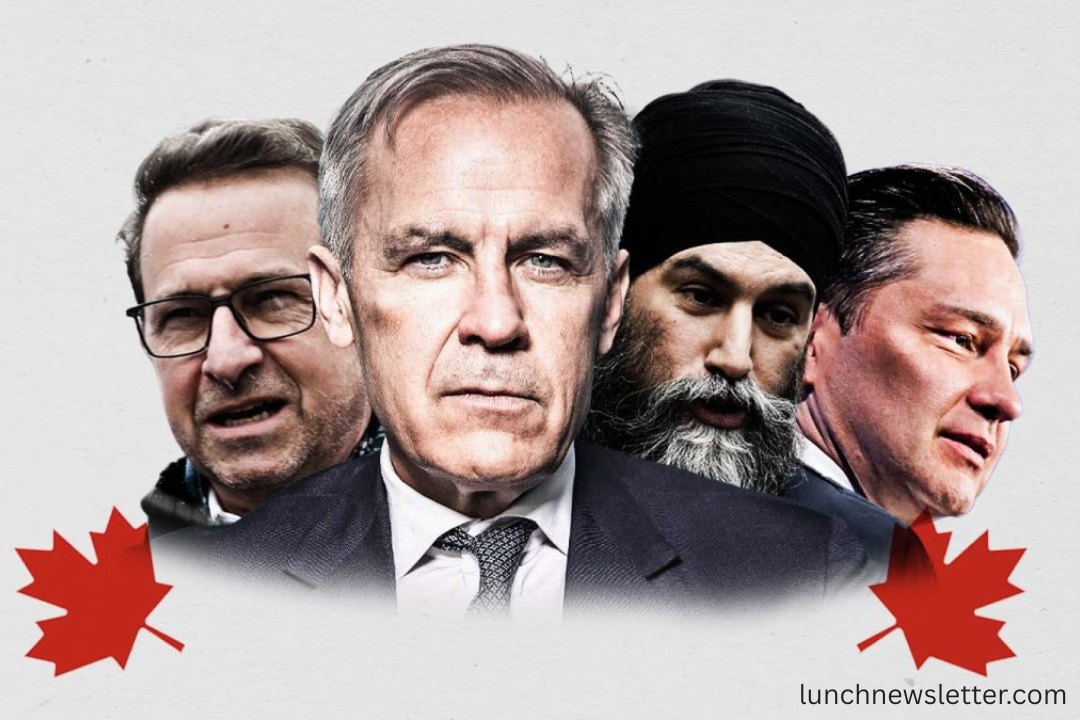Canada’s Federal Election consistently shapes the nation’s political, economic, and social direction. As Canadians prepare to cast their votes, all eyes turn to the key political figures and parties vying for leadership. With a rich tapestry of voices, ideologies, and regional interests, Canada’s Federal Election is more than a national event—it’s a mirror of the country’s evolving priorities.
Understanding Canada’s Federal Election System
Canada’s Federal Election determines the composition of the House of Commons, the lower chamber of Parliament. Canadians elect Members of Parliament (MPs) from 338 constituencies or “ridings.” The party that secures the majority of seats typically forms the government, and its leader becomes the Prime Minister. If no party wins a majority, the result is a minority government or coalition, which impacts policymaking and governance.
The Major Political Parties in Canada’s Federal Election
Several political parties compete for influence in Canada’s federal Election. While some are longstanding institutions, others have gained traction in recent years due to shifting voter sentiment.
Liberal Party of Canada
The Liberal Party, led by Justin Trudeau, has governed Canada since 2015. Trudeau, known for his progressive stances on climate change, multiculturalism, and social equity, is seeking to maintain leadership. However, recent challenges—ranging from economic concerns to ethics controversies—may influence voter confidence in the upcoming Canadian federal Election.
Conservative Party of Canada
The Conservatives, currently the Official Opposition, are led by Pierre Poilievre. Emphasizing fiscal responsibility, economic growth, and public safety, the party appeals to voters concerned with inflation, taxes, and immigration policy. The party aims to regain control of Canada’s Federal Election by tapping into concerns over affordability and government transparency.
New Democratic Party (NDP)
Jagmeet Singh leads the NDP, focusing on social justice, housing affordability, universal healthcare, and climate action. Often acting as a kingmaker in minority governments, the NDP continues to hold significant sway in Canada’s Federal Election, particularly among younger and urban voters.
Bloc Québécois
The Bloc, under Yves-François Blanchet, focuses primarily on Quebec’s interests and sovereignty. While its influence is regional, the Bloc can be decisive in a close federal contest. Its role in Canada’s Federal Election is essential for understanding Quebec’s distinct political landscape.
Green Party of Canada
Although smaller in representation, the Green Party remains influential in raising awareness of environmental policies and sustainable development. With a renewed focus on climate change and renewable energy, the party aims to increase its presence in Canada’s Federal Election.
People’s Party of Canada (PPC)
Led by Maxime Bernier, the PPC represents a libertarian perspective, advocating for reduced government involvement, vaccine skepticism, and stringent immigration policies. While controversial, the PPC has carved out a space in Canada’s Federal Election, especially among voters disillusioned with mainstream parties.
Key Issues Shaping Canada’s Federal Election
Voters are motivated by a wide range of national and local issues. As Canada’s Federal Election unfolds, several topics dominate the political discourse:
Economic Recovery and Inflation
With inflation affecting household budgets, affordability is at the top of many Canadians’ minds. Parties are proposing different strategies for addressing rising prices, housing costs, and national debt. Economic competence is a defining theme of Canada’s Federal Election.
Healthcare and Public Services
The healthcare system, stretched thin by the pandemic, continues to be a critical concern. Canadians are evaluating each party’s plan to strengthen the system, improve mental health services, and ensure equitable access. These issues weigh heavily in Canada’s Federal Election debates.
Climate Change and Environmental Policy
Canada’s commitment to reducing emissions and investing in green technology is under scrutiny. Voters are paying close attention to environmental platforms, making climate action a key point in Canada’s Federal Election.
Indigenous Reconciliation
Calls for action on reconciliation with Indigenous communities remain urgent. Policy on clean water, education, and justice reform is being closely watched, especially how parties address it during Canada’s Federal Election campaigns.
National Security and Immigration
Global instability, refugee crises, and cybersecurity threats are influencing Canada’s foreign policy stance. Canada’s Federal Election presents a platform for parties to clarify their positions on national security, immigration, and border control.
The Role of Youth and First-Time Voters
Young voters are becoming increasingly active in Canada’s Federal Election. With high digital literacy and strong opinions on climate change, equity, and housing, the youth vote could significantly impact election outcomes. Political parties are adapting their messaging to engage this demographic through social media and grassroots movements.
Technology and Media in the Election Landscape
Digital media and online platforms have transformed how candidates communicate. In Canada’s federal Election, social media is used for campaign announcements, fact-checking, and voter outreach. However, misinformation remains a concern, prompting debate over media regulation and the role of technology in democracy.
Women and Diversity in Canada’s Federal Election
Representation matters more than ever. Candidates from diverse backgrounds are stepping into the spotlight, reflecting Canada’s multicultural society. Canada’s Federal Election has seen more Indigenous, Black, Asian, and female candidates seeking office, reshaping the image of political leadership in the country.
Debates and Public Engagement

Televised debates, town halls, and community meetings remain essential tools for voter engagement. These forums allow Canadians to assess candidates directly, ask questions, and voice their concerns. In Canada’s Federal Election, debates are pivotal moments that can sway public opinion and media coverage.
Regional Dynamics in the Election
Different provinces and territories bring unique perspectives to Canada’s Federal Election. For example:
- Western Canada focuses on energy policy and provincial autonomy.
- Ontario and Quebec are often battlegrounds that determine the Election’s outcome.
- Atlantic Canada prioritizes healthcare and regional development.
- Northern communities emphasize Indigenous rights, infrastructure, and cost of living.
Understanding these dynamics provides a clearer picture of how the Election may unfold across the country.
Voter Turnout and Civic Responsibility
Participation in Canada’s Federal Election reflects public trust in democratic institutions. While voter turnout has fluctuated over the years, civic engagement efforts, such as early voting and mail-in ballots, are being expanded to ensure accessibility. Ensuring every citizen’s voice is heard is crucial for a healthy democracy.
Frequently Asked Questions (FAQ’s)
What is Canada’s Federal Election?
Canada’s federal Election is the national process in which Canadian citizens vote to elect members of Parliament (MPs) to represent them in the House of Commons. The outcome determines which party forms the government and who becomes the Prime Minister.
How often does Canada’s Federal Election take place?
Canada’s Federal Election is typically held every four years. Still, elections can be called earlier if a government loses a confidence vote or if the Prime Minister requests the Governor General to dissolve Parliament.
Who are the major parties in Canada’s Federal Election?
The major political parties in Canada’s Federal Election include the Liberal Party, Conservative Party, New Democratic Party (NDP), Bloc Québécois, Green Party, and People’s Party of Canada (PPC).
What issues are important in Canada’s Federal Election?
Key issues in Canada’s Federal Election often include the economy, healthcare, climate change, Indigenous reconciliation, immigration policy, and national security. These priorities can vary depending on regional and demographic factors.
How is the winner determined in Canada’s Federal Election?
The party that wins the majority of seats in the House of Commons during Canada’s Federal Election forms the government. If no party wins a majority, a minority government results, which may require cooperation between parties to govern effectively.
Can independent candidates run in Canada’s Federal Election?
Yes, independent candidates who are not affiliated with any political party can run in Canada’s Federal Election. They must meet the exact nomination requirements as party candidates.
How does voting work in Canada’s Federal Election?
In Canada’s Federal Election, voters cast a ballot for one candidate in their local riding. The candidate with the most votes wins the seat, and the party with the most seats overall typically forms the government.
Why is voter turnout significant in Canada’s Federal Election?
Voter turnout in Canada’s Federal Election reflects public engagement in the democratic process. High turnout strengthens democracy by ensuring a broader representation of citizens’ voices in government.
Conclusion
As Canada’s Federal Election progresses, the nation watches with anticipation. The leaders, platforms, and key issues at the heart of the race will shape Canada’s direction for years to come. Informed voters hold the power to influence not only who wins but also how the country evolves.

